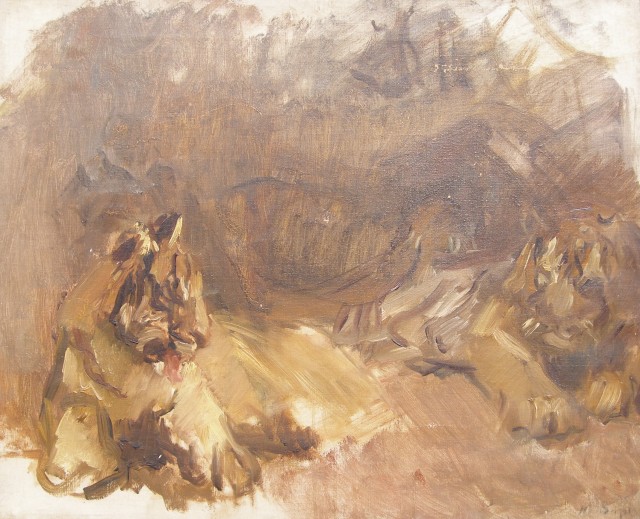Max Slevogt
(1868-1932)
Along with Max Liebermann and Lovis Corinth, Max Slevogt played a pivotal role in the development of German Impressionism. A major painter, printmaker and illustrator, Slevogt began his studies at the Akademie der Bildenden Kunste, Munich, in 1885. Four years later he completed his education at the Academie Julian, Paris.
During the 1890's Max Slevogt lived and worked in Munich and became a founding member of the Munich Secession. He contributed many illustrations to the leading artistic and satirical publications, such as, Jugend and Simplisissimus. In 1901 Slevogt settled in Berlin and taught at the academies of both that city and of Munich. He also became a leading member of the Berlin Secession and, in 1914, was appointed to the Berlin Academy of Arts. During this period he illustrated such fine books as Ali Baba (1903), Lederstrumpf (1907) and Goethe's Faust (1924).
The art of Max Slevogt is today included in most major German museums. Tigers is an outstanding example of Slevogt's highly regarded art. Employing the minimum of lines he portrays the lion in three distinct studies, which unify the completed image in their delineations of both the actual animal and its emotional and psychological state of being. Tigers was commissioned by the fine arts publication, Die Moderne graphik, and published by them in a limited edition of two hundred impressions.
